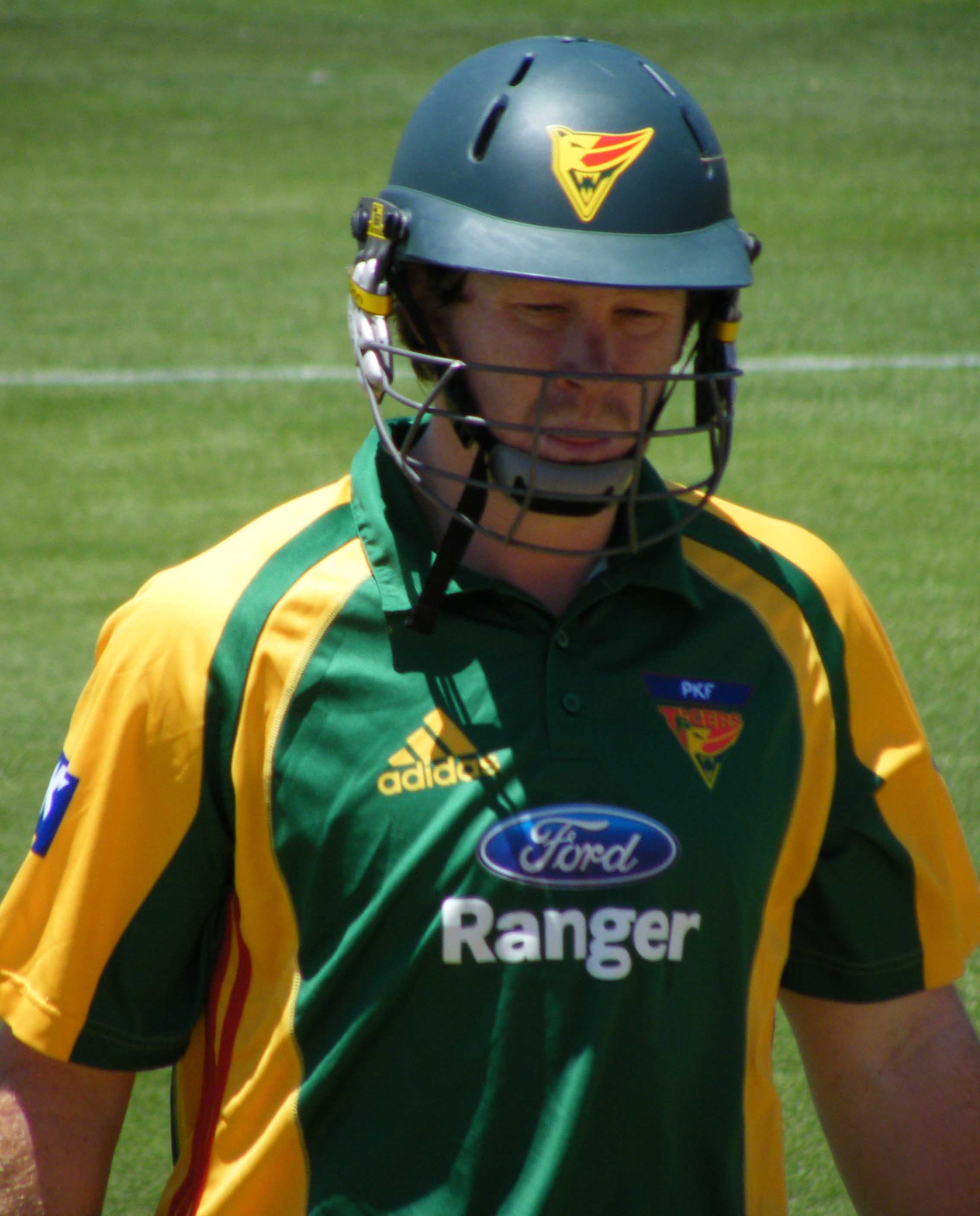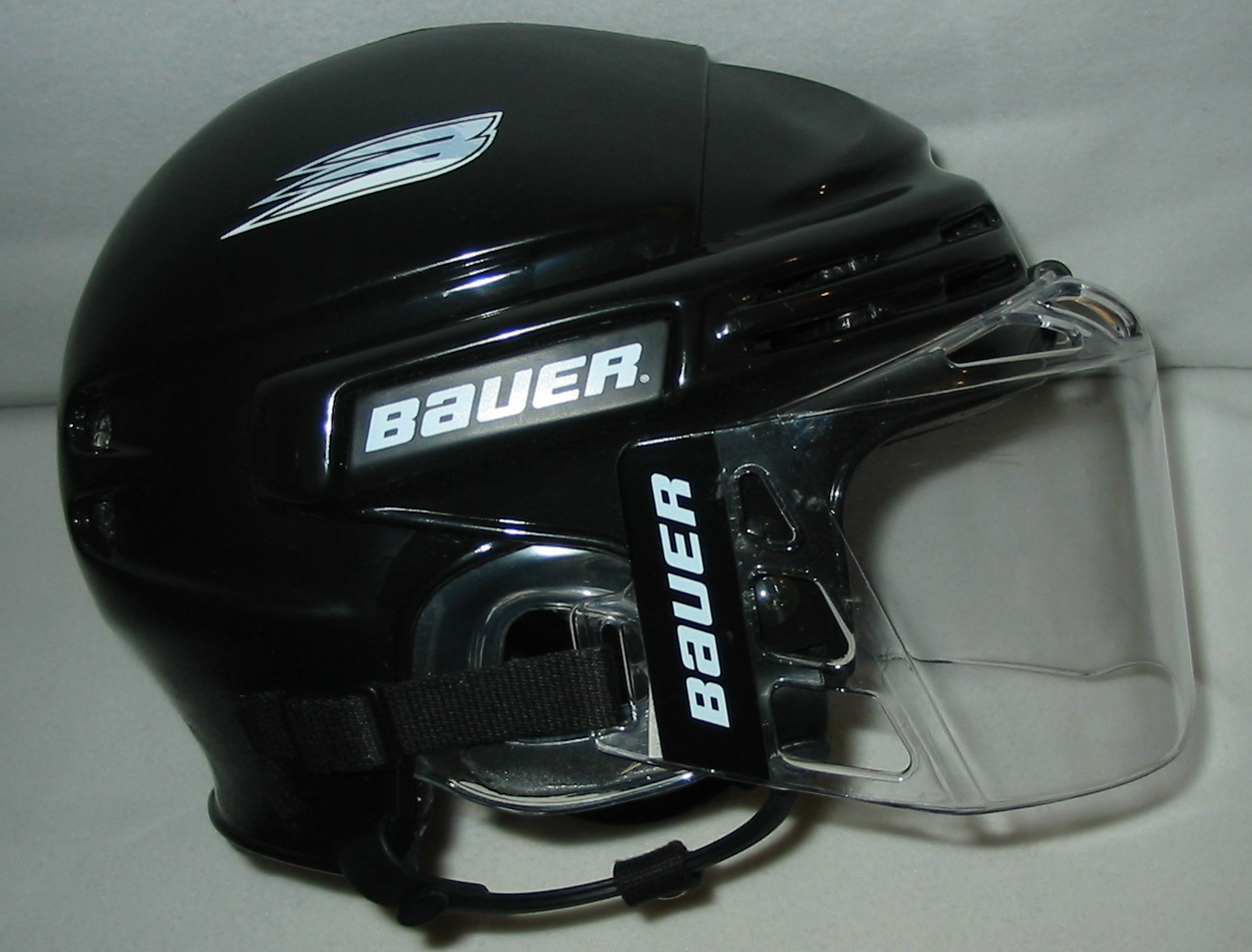|
Helmet
A helmet is a form of protective gear worn to protect the head. More specifically, a helmet complements the skull in protecting the human brain. Ceremonial or symbolic helmets (e.g., a policeman's helmet in the United Kingdom) without protective function are sometimes worn. Soldiers wear combat helmets, often made from Kevlar or other lightweight synthetic fibers. The word ''helmet'' is derived from ''helm'', an Old English word for a protective head covering. Helmets are used for most sports (e.g., jockeys, American football, ice hockey, cricket, baseball, skiing, hurling and rock climbing); dangerous work activities such as construction, mining, riot police, military aviation, and in transportation (e.g. motorcycle helmets and bicycle helmets). Since the 1990s, most helmets are made from resin or plastic, which may be reinforced with fibers such as aramids. Designs Some British gamekeepers during the 18th and 19th centuries wore helmets made of straw bound together wi ... [...More Info...] [...Related Items...] OR: [Wikipedia] [Google] [Baidu] |
Bicycle Helmet
A bicycle helmet is a type of helmet designed to attenuate impacts to the head of a cycling, cyclist in collisions while minimizing side effects such as interference with peripheral vision. History History of designs A cycle helmet should generally be light in weight and provide ample ventilation because cycling can be an intense aerobic exercise, aerobic activity which significantly raises body temperature, and the head in particular needs to be able to regulate its temperature. The dominant form of the helmet up to the 1970s was the "hairnet" style, an open construction made of rubber bars covered in leather. This offered acceptable protection from scrapes and cuts, but only minimal impact protection, and was mainly used by Bicycle racing, racing cyclists. More widespread use of helmets began in the US in the 1970s. After many decades when bicycles were regarded largely as children's toys, many American adults took up cycling during and after the bike boom of the ... [...More Info...] [...Related Items...] OR: [Wikipedia] [Google] [Baidu] |
Motorcycle Helmet
A motorcycle helmet is a type of helmet used by motorcycle riders. Motorcycle helmets contribute to motorcycle safety by protecting the rider's head in the event of an impact. They reduce the risk of head injury by 69% and the risk of death by 42%. Their use is required by law in many countries. However, only 10.4% of all motorcyclists wear helmets, according to the World Health Organization in 2016. Motorcycle helmets consist of a Polystyrene, polystyrene foam inner shell that absorbs the shock of an impact, and a protective plastic outer layer. Several variations exist, notably helmets that cover the chin area and helmets that do not. Some helmets provide additional conveniences, such as ventilation, face shields, sun visors, ear protection, or a wireless microphone. Origins The origins of the crash helmet date back to the Brooklands race track in early 1914, when a medical officer, Dr. Eric Gardner, noticed he was seeing a motor cyclist with head injuries about every two we ... [...More Info...] [...Related Items...] OR: [Wikipedia] [Google] [Baidu] |
Football Helmet
A football helmet is a type of protective headgear used mainly in gridiron football, although a structural variation has occasional use in Australian rules football. It consists of a hard plastic shell with thick padding on the inside, a Face mask (gridiron football), face mask made of one or more plastic-coated metal bars, and a chinstrap. Each position has a different type of face mask to balance protection and visibility, and some players add polycarbonate visors to their helmets, which are used to protect their eyes from glare and impacts. Helmets are a requirement at all levels of organized football, except for non-tackle variations such as flag football. Although they are protective, players can and do still suffer head injuries such as concussions. Football helmets have changed dramatically with the modernization of the sport to facilitate technological changes and to improve the safety of the game. Despite lower rates of some injuries, serious traumas to the head are stil ... [...More Info...] [...Related Items...] OR: [Wikipedia] [Google] [Baidu] |
Combat Helmet
A combat helmet, also called a ballistic helmet, battle helmet, or helmet system (for some Modular design, modular accessory-centric designs) is a type of helmet designed to serve as a piece of body armor intended to protect the wearer's head during combat. Helmets designed for warfare are among the earliest types of headgear to be developed and worn by humans, with examples found in several societies worldwide, the earliest of which date as far back as the Bronze Age. Most early combat helmets were designed to protect against close-range strikes, thrown objects, and low-velocity projectiles. By the Middle Ages, helmets that protected the entire head were common elements of Plate armour, plate armor sets. The development of firearms, cannons, and explosive weaponry rendered armor intended to protect against enemy attack largely obsolete, but lightweight helmets remained for identification and basic protection purposes into the late 19th and early 20th centuries, when developments ... [...More Info...] [...Related Items...] OR: [Wikipedia] [Google] [Baidu] |
Custodian Helmet
The custodian helmet is a type of helmet worn predominantly by male police officers in the United Kingdom and within certain other places around the world. First used by the Metropolitan Police in London in 1863, the BBC labelled the custodian helmet a "symbol of British law enforcement". They are worn by male constables and sergeants on foot patrol. A cultural icon, it has featured in films, TV series and other media involving British police. History The custodian helmet is the headgear traditionally worn by male police constables and sergeants while on foot patrol in England and Wales. Officers of all ranks in most forces are also issued a flat, peaked cap that is worn on mobile patrol in a vehicle. Ranks above sergeant wear the peaked cap only. However, some inspectors wear the custodian helmet, but with two silver bands around the base (to match the two pips worn as rank insignia) to denote their position. Claimed by some sources to have been based on the spiked pickelhaub ... [...More Info...] [...Related Items...] OR: [Wikipedia] [Google] [Baidu] |
Batting Helmet
A batting helmet is worn by Batter (baseball), batters in the game of baseball or softball. It is meant to protect the batter's head from errant pitches thrown by the pitcher. A batter who is "hit by pitch," due to an inadvertent wild pitch or Beanball, by intent, may be seriously, even fatally, injured. Early concepts (1905–1920s) In 1905, Mogridge"Baseball Batting Helmets - A History" ''Sports Safety Blog'', September 2009 created the first crude protective headgear and was granted patent No. 780899 for a "head protector." This first attempt at a batting helmet was said to look like an "inflatable boxing glove that wrapped around the hitters head." [...More Info...] [...Related Items...] OR: [Wikipedia] [Google] [Baidu] |
Cricket Helmet
Helmets in cricket were developed in the 20th century. History There are recorded instances of cricketers using scarves and padded caps to protect themselves throughout cricket history. Patsy Hendren was one of the first to use a self-designed protective hat in the 1930s. Helmets were not in common use until the 1970s. The first helmets were seen in World Series Cricket, with Dennis Amiss being the first player to consistently wear a helmet which was a customised motorcycle helmet. Mike Brearley was another player who wore his own design. Tony Greig was of the opinion that they would make cricket more dangerous by encouraging bowlers to bounce the batsmen. Graham Yallop of Australia was the first to wear a protective helmet to a test match on 17 March 1978, when playing against West Indies at Bridgetown. Later Dennis Amiss of England popularised it in Test cricket. Helmets began to be widely worn thereafter. The last batsmen at the highest (Test match) level to never w ... [...More Info...] [...Related Items...] OR: [Wikipedia] [Google] [Baidu] |
Hockey Helmet
A hockey helmet is worn by players of ice hockey, inline hockey, and bandy to help protect the head from potential injury when hit by the puck, sticks, skates, boards, other players, or the ice. The shell of a hockey helmet is generally made of a substance called vinyl nitrile that disperses force from the point of contact, while the liner may be made of either vinyl nitrile foam, expanded polypropylene foam, or other material to absorb the energy, to reduce the chances of concussion. Hockey helmets grip the head from inside by cupping the back of head, or the occipital protuberance. Helmet manufacturers will have a chart that relates their helmet sizes to head measurements. On older models, the helmet size is adjusted by loosening the screws on the side to slide the front portion forward or back. Visors and shields A visor or face shield in ice hockey is a device attached to the front of a helmet to reduce potential of injury to the face. Visors cover the upper half of th ... [...More Info...] [...Related Items...] OR: [Wikipedia] [Google] [Baidu] |
Hurling
Hurling (, ') is an outdoor Team sport, team game of ancient Gaelic culture, Gaelic Irish origin, played by men and women. One of Ireland's native Gaelic games, it shares a number of features with Gaelic football, such as the field and goals, the number of players and much glossary of Gaelic games terms, terminology. The same game played by women is called camogie ('), which shares a common Gaelic root. The objective of the game is for players to use an Fraxinus excelsior, ash wood stick called a hurl or Hurley (stick), hurley (in Irish a ', pronounced or in English) to hit a small ball called a ' (pronounced in English) between the opponent's goalposts either over the crossbar for one point or under the crossbar into a net guarded by a gaelic football and Hurling positions#Goalkeeper, goalkeeper for three points. The ' can be caught in the hand and carried for not more than four steps, struck in the air or struck on the ground with the hurley. It can be kicked, or slapp ... [...More Info...] [...Related Items...] OR: [Wikipedia] [Google] [Baidu] |
Protective Gear
Personal protective equipment (PPE) is protective clothing, helmets, goggles, or other garments or equipment designed to protect the wearer's body from injury or infection. The hazards addressed by protective equipment include physical, electrical, heat, chemical, biohazards, and airborne particulate matter. Protective equipment may be worn for job-related occupational safety and health purposes, as well as for sports and other recreational activities. ''Protective clothing'' is applied to traditional categories of clothing, and ''protective gear'' applies to items such as pads, guards, shields, or masks, and others. PPE suits can be similar in appearance to a cleanroom suit. The purpose of personal protective equipment is to reduce employee exposure to hazards when engineering controls and administrative controls are not feasible or effective to reduce these risks to acceptable levels. PPE is needed when there are hazards present. PPE has the serious limitation that it ... [...More Info...] [...Related Items...] OR: [Wikipedia] [Google] [Baidu] |
Kevlar
Kevlar (para-aramid) is a strong, heat-resistant synthetic fiber, related to other aramids such as Nomex and Technora. Developed by Stephanie Kwolek at DuPont in 1965, the high-strength material was first used commercially in the early 1970s as a replacement for steel in racing tires. It is typically spun into ropes or fabric sheets that can be used as such, or as an ingredient in composite material components. Kevlar has many applications, ranging from bicycle tires and sailcloth#Kevlar, racing sails to bulletproof vests, due to its high Specific strength, tensile strength-to-weight ratio; by this measure it is five times stronger than steel. It is also used to make modern marching drumheads that withstand high impact, and for Mooring, mooring lines and other underwater applications. A similar fiber, Twaron, with the same chemical structure was developed by Akzo in the 1970s. Commercial production started in 1986, and Twaron is manufactured by Teijin Aramid. History Poly- ... [...More Info...] [...Related Items...] OR: [Wikipedia] [Google] [Baidu] |
Jockey
A jockey is someone who rides horses in horse racing or steeplechase (horse racing), steeplechase racing, primarily as a profession. The word also applies to camel riders in camel racing. The word "jockey" originated from England and was used to describe the individual who rode horses in racing. They must be light, typically around a weight of 100–120 lb. (45–55 kg), and physically fit. They are typically self-employed, and are paid a small fee from the horse trainer, whose colors they wear while competing in a race. They also receive a percentage of the horse's winnings. The job has a very high risk of debilitating or life-threatening injuries, not only from racing accidents but also, because of strict weight restrictions, from eating disorders. Originally, in most countries, the jockeys were all male. Over time, female jockeys have been allowed to ride; thus, now there are many successful and well-known female jockeys. The participation of African American joc ... [...More Info...] [...Related Items...] OR: [Wikipedia] [Google] [Baidu] |











